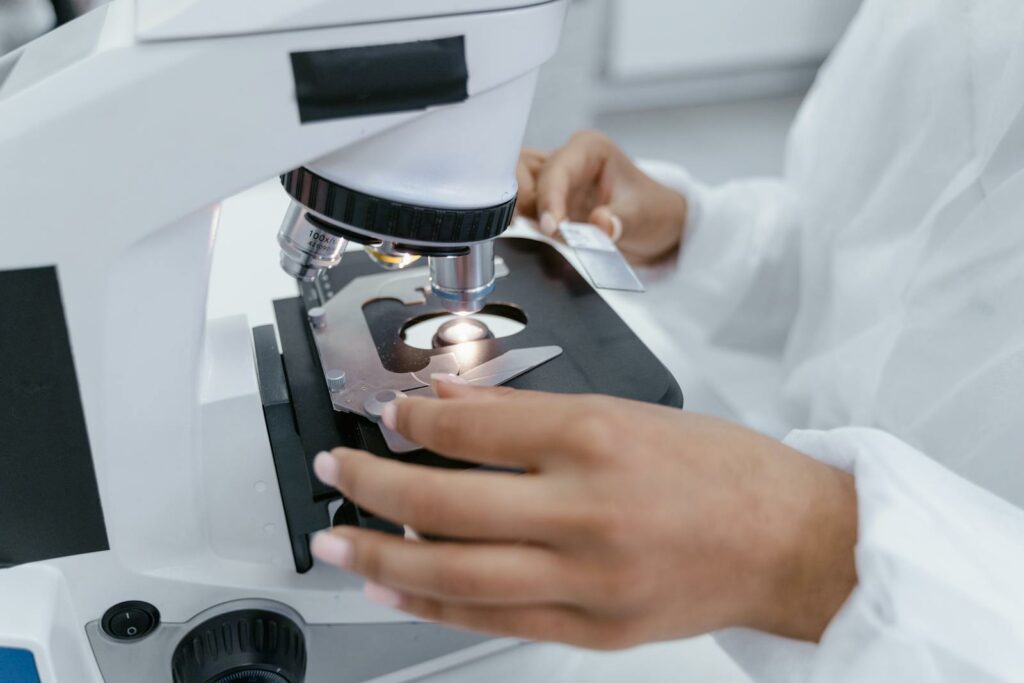Mutagenicity testing assesses whether a substance can induce genetic mutations, which can lead to carcinogenic risks. These studies are critical for early-stage screening and regulatory compliance.
Detecting DNA mutations for regulatory safety
Our key Mutagenicity assays
-
OECD 471 – Ames Test → Detects point mutations in bacteria to identify DNA-reactive substances.
-
OECD 471 – Enhanced Ames Test → Optimized for detecting N-nitrosamines and NDSRIs, improving sensitivity in regulatory assessments.
-
OECD 476 – HPRT Gene Mutation Test → Evaluates mammalian cell mutations to identify genotoxic risks.
-
OECD 490 – Mammalian Lymphoma Assay (MLA) → Detects both point mutations and chromosomal damage.
GenEvolutioN ensures high-throughput and precise mutagenicity assessments, providing data essential for regulatory decision-making.
Assessing chromosomal damage for genotoxic risk evaluation
Cytogenicity testing determines whether a substance induces structural (clastogens) or numerical (aneugens) chromosomal damage, both of which contribute to genotoxicity and carcinogenic potential.
Key cytogenicity assays
-
OECD 487 – Micronucleus Test → Detects chromosomal breakage or loss in mammalian cells, distinguishing between clastogenic and aneugenic activity.
-
OECD 473 – Chromosomal Aberration Assay (CAA) → Evaluates structural chromosomal alterations, a key indicator of genetic toxicity.
Ensuring the safety of substances for skin and ocular exposure
Skin toxicology studies assess the potential irritation, corrosion, and phototoxicity effects of chemicals, helping to comply with international safety regulations.
Key skin toxicology assays
-
OECD 439 – Skin Irritation Test (RhE Model) → Evaluates skin irritation potential using reconstructed human epidermis.
-
OECD 431 – Skin Corrosion Test (RhE Model) → Determines severe skin damage risks.
-
OECD 492 – Ocular Irritation Test (RhCE Model) → Assesses eye irritation potential using a reconstructed human cornea model.
-
OECD 432 – Phototoxicity Test (3T3 NRU & RhE Models) → Evaluates adverse effects induced by UV light exposure.
GenEvolutioN leverages non-animal in-vitro testing solutions, offering accurate and ethical alternatives for regulatory safety evaluations.
Identifying allergic and sensitizing reactions
Skin sensitization assessments detect whether substances can trigger allergic responses, a critical concern for pharmaceuticals, cosmetics, and chemicals.
Key skin sensitization assays
-
OECD 442C – DPRA/kDPRA → Analyzes peptide reactivity to predict sensitization potential.
-
OECD 442D – KeratinoSens Assay → Detects cellular stress activation in human keratinocytes.
-
OECD 442E – Senzagen GARD Assay → Uses gene expression profiling to identify sensitizing chemicals.
With comprehensive in-vitro methodologies, GenEvolutioN ensures reliable and regulatory-compliant skin sensitization screening.





